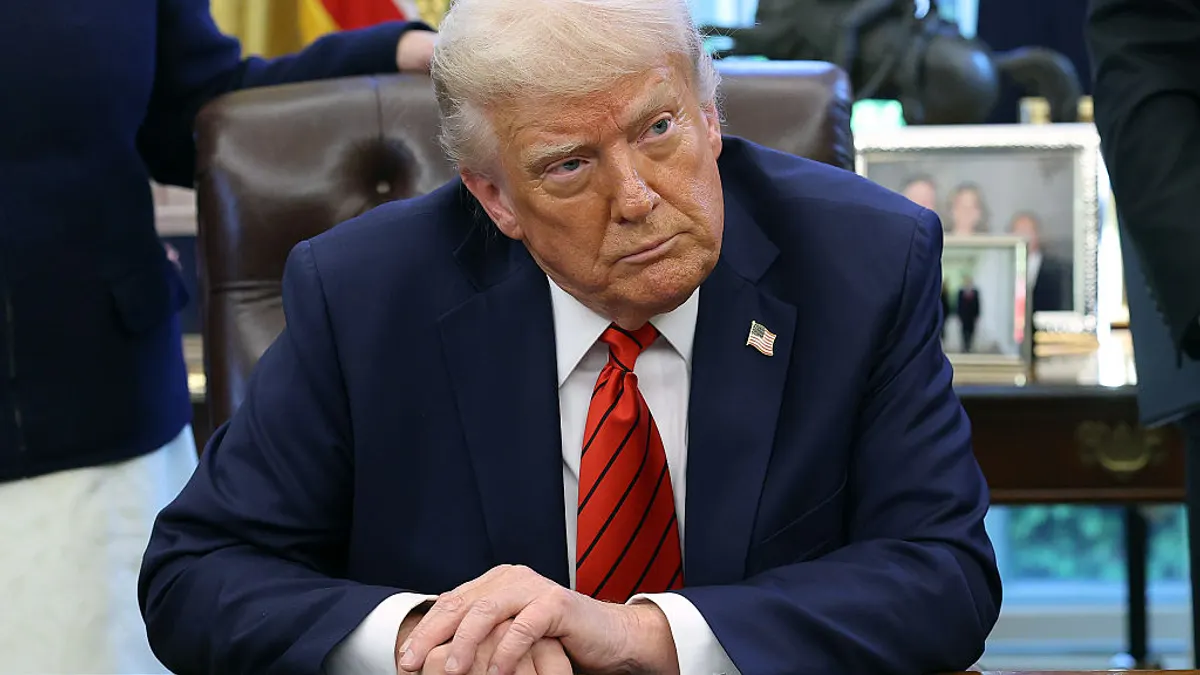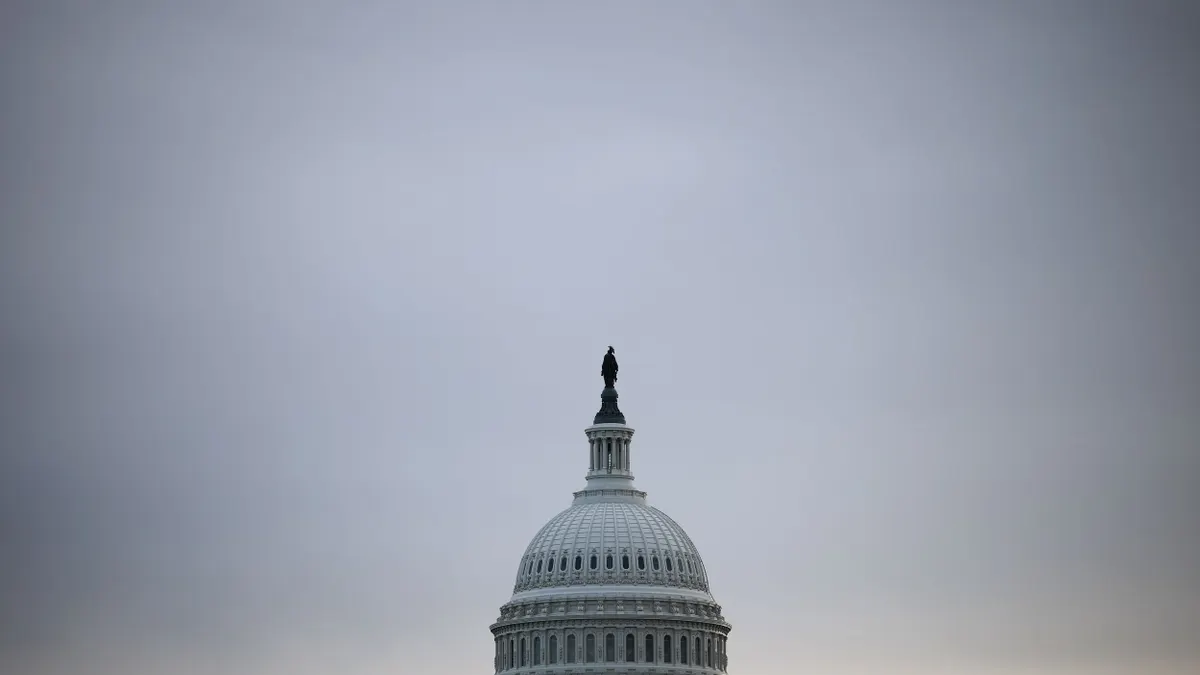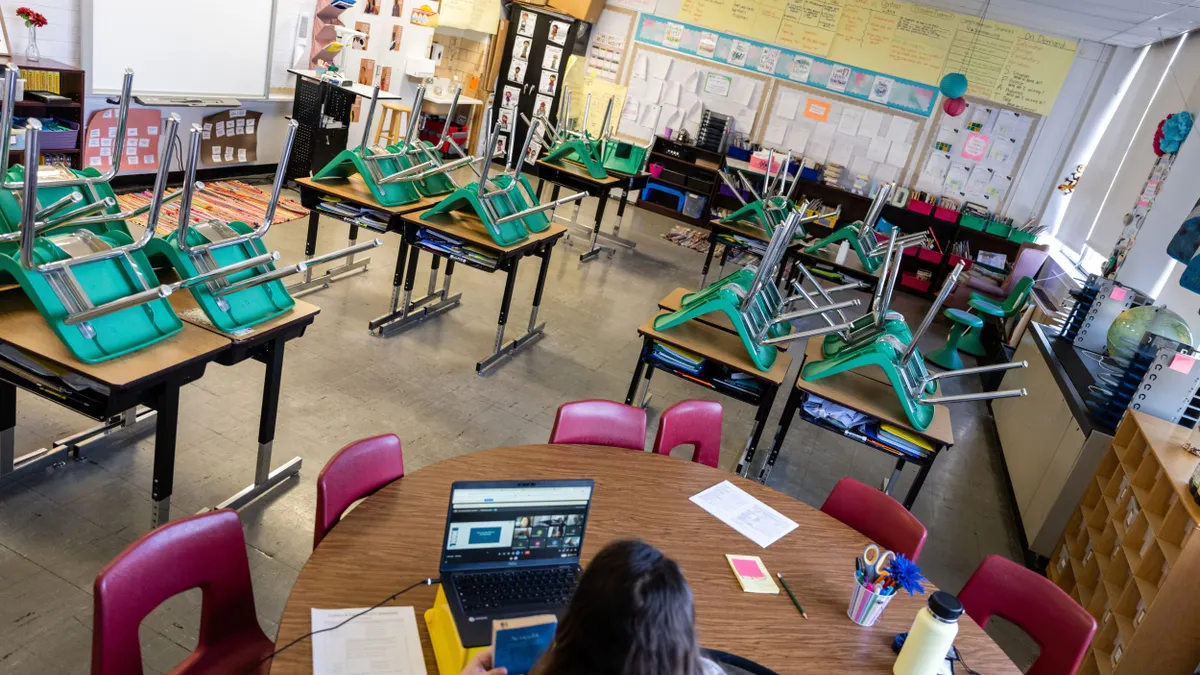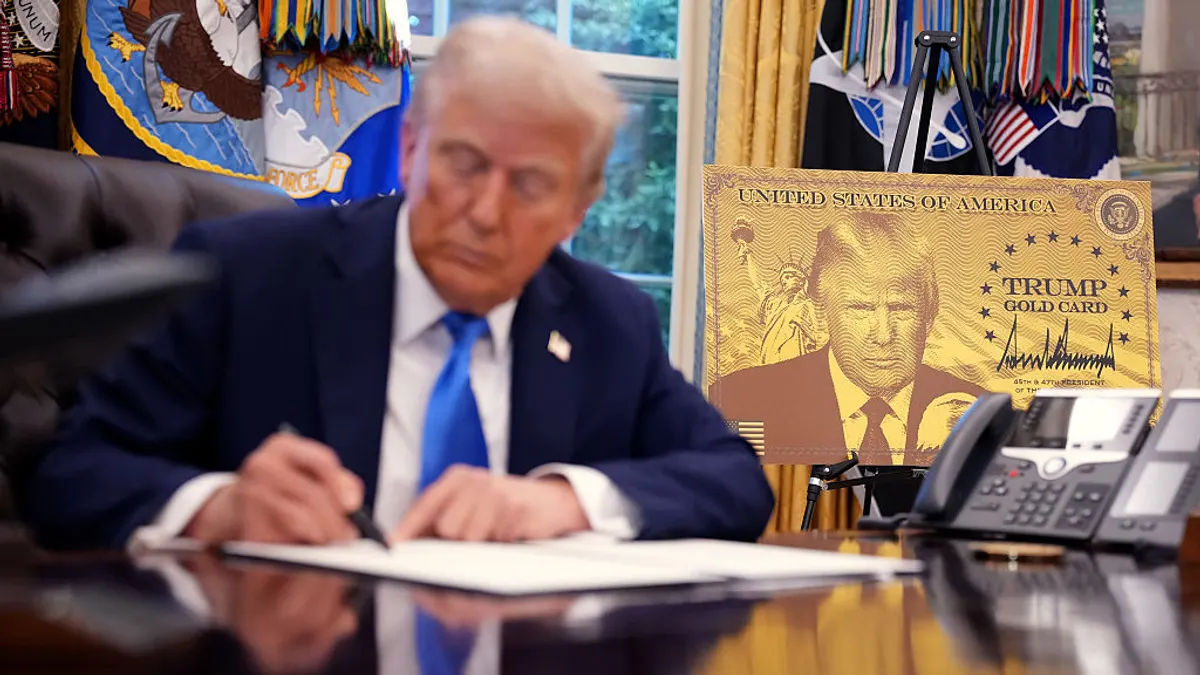President Donald Trump on Friday delivered a federal budget that would slash more than $4.5 billion in K-12 funding for fiscal year 2026. In total, cuts to the Education Department would amount to $12 billion, or 15% of its current funding.
The deep cuts would hit programs meant to ensure equitable access to education for underserved students and to protect their civil rights. And though maintained at current funding levels, Title I and special education programs would be reorganized into separate single grants aimed at letting states spend the money as they see fit.
"The Budget continues the process of shutting down the Department of Education," the White House's funding request states.
Among the cuts:
- All $70 million for Teacher Quality Partnerships grant, often used to diversify the teacher workforce.
- All $7 million for Equity Assistance Centers, established as part of desegregation efforts.
- All $890 million for English Language Acquisition.
- A $49 million, or 35%, reduction for the Office for Civil Rights.
At the same time, Trump's budget would boost funding for charter schools by $60 million.
Funding for Title I and Individuals with Disabilities Education Act programs — which public school advocates had worried would be cut — was preserved. Head Start, which was widely rumored to be on the chopping block, appears to have survived for now as it is not among the cuts listed in the budget document.
Cuts reflect administration's anti-DEI priority
Many of the proposed cuts reflect Trump's course reversal from the previous decades-long focus on equity in the education sector.
For instance, the budget would zero out Equity Assistance Centers, originally established under the Civil Rights Act of 1964 to level the playing field for students of color, and especially Black students, after decades of segregation and its long-standing impact on their achievement over generations. Friday's White House budget request characterizes such efforts as "distractions" from focusing on core subjects like math, reading, science and history.
Another program that would be halted is the Teacher Quality Partnerships grant, which funds teacher pipeline programs and helped establish a master's program for teachers of color. The budget document argues that the program centers "racism in their pedagogy" by including instruction for aspiring teachers on "social justice activism, ’anti-racism,’ and instruction on white privilege and white supremacy." Professional development workshops funded by the grants have included topics such as "building cultural competence," "dismantling racial bias," and "centering equity in the classroom," which the administration took issue with.
Also on the chopping block: The budget would eliminate the $890 million English Language Acquisition program, which the administration says "encourages bilingualism," and "deemphasizes English primacy."
The administration also proposed an end to the U.S. Health and Human Services Department's Preschool Development Grants. In the budget overview, the White House cited efforts by the Minnesota Department of Education to use the money to implement “intersectionality” and “racial equity” in early childhood education programs and by Oregon to provide "quality care" for the state’s LGBTQIA+ families.
One of the few increases included in the proposal to K-12 program funding was an additional $60 million for charter schools, which it says "have a proven track record of improving students' academic achievement" and will create more local school options while expanding parental choice.
Proposed cuts follow recent moves to gut Education Department
The president's budget request "reflects funding levels for an agency that is responsibly winding down, shifting some responsibilities to the states, and thoughtfully preparing a plan to delegate other critical functions to more appropriate entities." said U.S. Secretary of Education Linda McMahon.
The budget proposal "supports the President’s vision of expanding school choice and ensuring every American has access to an excellent education," McMahon said in a statement on Friday.
Many of the proposed cuts reflect moves already made to pare down and eventually close the Education Department "to the maximum extent appropriate and permitted by law,” as Trump ordered in a March directive.
For example, as part of a massive reduction in force that eliminated half of the department’s employees, the ELA office was already entirely slashed.
The RIF also cut OCR's workforce by half, shutting down half of the nation's offices that were responsible for investigating thousands of school civil rights complaints. OCR operations under Trump have pivoted to focus on eliminating LGBTQ+-friendly policies, and much of its investigative responsibilities and all of its enforcement work has been shifted to the Department of Justice.
One of the first cuts made to the department, even prior to the mass layoffs, was the February cancellation of Teacher Quality Partnership grants, which the administration called “divisive.” Those grants, entirely eliminated in Friday's proposed budget, were part of a $600 million cut that was challenged in court by Democratic attorneys general and temporarily reinstated in March, only for the Supreme Court to then allow the cuts to move forward.
Next steps in the budget process
While far from final, presidents' budget proposals reflect their priorities for the nation and oftentimes hint at the road ahead. Though priorities shift between administrations, and particularly so when the party in power changes — but the shifts have been nothing short of dramatic and unprecedented from Biden to Trump.
Appropriations are ultimately set by Congress, which is now controlled by Republicans who espouse many of Trump's priorities and seem sympathetic to the president's K-12 priorities, including shutting down the Education Department. Long considered impossible, the agency's total shutdown still seems like a longshot to many. But, it's possible that many of the president's funding proposals — which would eliminate or greatly reduce many of the department's functions — will be pushed through.
“The President’s Budget Request is simply one step in the annual budget process," said U.S. Sen. Susan Collins, R-Maine, chair of the Senate Appropriations Committee, in a statement Friday. Noting that the budget was submitted late and isn't comprehensive, Collins said, "Ultimately, it is Congress that holds the power of the purse."
The House and Senate Appropriations committees will hold hearings to learn more about the president's proposal and then are to mark up their own bills to fund the federal government for the fiscal year that begins Oct. 1.







 Dive Awards
Dive Awards














